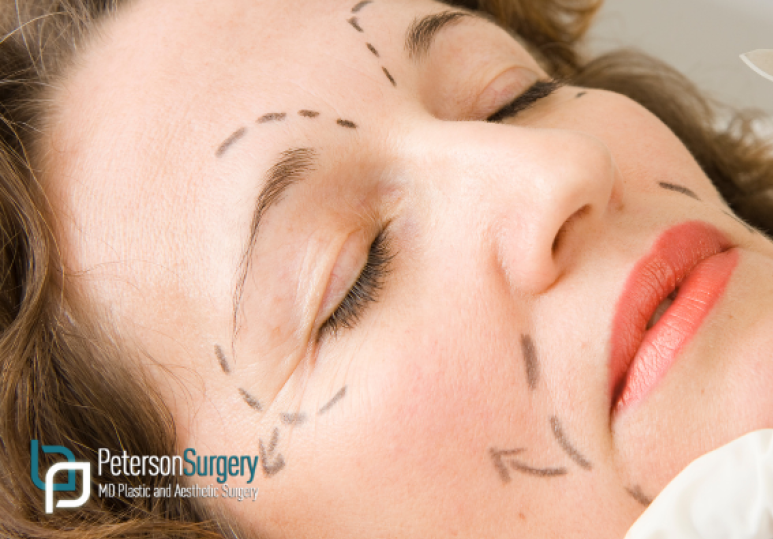Plastic Surgery, like any other type of surgery, typically leaves scars. A good plastic surgeon knows how to minimize scaring, and place his or her incisions so that scars are hidden within skin folds, under hair lines or along contour changes.
When we are cut our body initiates a complex inflammatory process and begins to repair the damage. As blood cells form a clot to stop the bleeding histamine is released, stretching out the blood vessels in the area to accommodate the extra blood cells required for the clot. Once a clot is in place the body begins to release collagen to securely knit the wound closed under the clot, which dries into a scab. To do their job these collagen producing cells require extra oxygen and energy. Your body grows more blood vessels along the wound so that more blood cells can carry oxygen to the collagen cells. This increased blood flow is what makes scars turn pink. The new collagen makes the scar puffy, but the body flattens it out, making the scar more flush with the rest of your skin. Once the wound has healed and the scar is firmly in place the extra blood vessels are reabsorbed into the body, causing the scar to lose its pink colour and fade.
The ideal scar is flat, white and barely noticeable, but it takes your body a while to get a scar to that point. In some cases it may take a scar up to two years to fade to the point of near invisibility. However, there are a variety of factors that influence how noticable your scar or scars will be including:
- Your genetics. Your scar forming qualities are inherited from your parents. To see how your body is likely to scar consult any scars your parents or siblings may have.
- How much tension the scar experiences. An incision that gets stretched a lot during the healing progress (such as a cut on your elbow) is more likely to form a scar that is thick, raised and wide.
- The location of the incision and the type of skin. Delicate skin, such as that found on your eyelids, tends to scar less than the thicker skin found on places like your back and chest.
- Your age. Children between the ages of 8 and 16 tend to form the thickest scars whereas older individuals with thin skin are more likely for form thin scars.
- The condition of the wound. A clean cut is more likely to heal nicely than wounds with ragged edges, which tend to form thick scars.
- Proper closure techniques. An incision that is closed skillfully is less likely to form really noticeable scars.
- The blood supply. Getting enough oxygen to the incision site requires an adequate blood supply. Factors such as smoking affect the ability of your blood to hold oxygen, and can cause a wider scar. Smoking can also delay healing, and may mean that you need surgery to properly close the wound.
- Your diet. A poor diet can delay the healing process and cause the wound to reopen while it is trying to heal.
- An infection. Infections disrupt the wound healing process and can lead to a wider scar.
- Your overall health. Medications, medical conditions and previous exposure to radiation can affect how quickly your wound heals so you should share your medical history with your plastic surgeon before surgery.
A skilled surgeon can hide most scars, but there are a variety of factors that influence how noticable those scars will be. To minimize scarring you should eat a healthy diet, not smoke and consult with your plastic surgeon. He or she will be able to give you a rough idea of what sort of scarring you can expect, and will show you how he or she plans to try and hide the scars.
Dr. Brian Peterson is a board certified plastic surgeon based in Kelowna, British Columbia. His specialties include facial rejuvenation, body contouring, breast enhancement and non-surgical skin care. Contact Peterson MD at 250.868.9099 to book your consultation.





